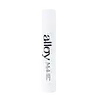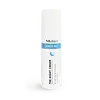What's inside
What's inside
 Key Ingredients
Key Ingredients

 Benefits
Benefits

 Concerns
Concerns

 Ingredients Side-by-side
Ingredients Side-by-side

Estriol
C12-15 Alkyl Benzoate
AntimicrobialCaprylic/Capric Triglyceride
MaskingCetyl Alcohol
EmollientEthylhexylglycerin
Skin ConditioningGlycerin
HumectantGlyceryl Stearate
EmollientHydroxyethyl Acrylate/Sodium Acryloyldimethyl Taurate Copolymer
Emulsion StabilisingOleic Acid
EmollientOlea Europaea Fruit Oil
MaskingPEG-100 Stearate
Phenoxyethanol
PreservativeDimethicone
EmollientWater
Skin ConditioningStearic Acid
CleansingTriethanolamine
BufferingTocopheryl Acetate
AntioxidantEstriol, C12-15 Alkyl Benzoate, Caprylic/Capric Triglyceride, Cetyl Alcohol, Ethylhexylglycerin, Glycerin, Glyceryl Stearate, Hydroxyethyl Acrylate/Sodium Acryloyldimethyl Taurate Copolymer, Oleic Acid, Olea Europaea Fruit Oil, PEG-100 Stearate, Phenoxyethanol, Dimethicone, Water, Stearic Acid, Triethanolamine, Tocopheryl Acetate
 Reviews
Reviews

Ingredients Explained
These ingredients are found in both products.
Ingredients higher up in an ingredient list are typically present in a larger amount.
Glycerin is already naturally found in your skin. It helps moisturize and protect your skin.
A study from 2016 found glycerin to be more effective as a humectant than AHAs and hyaluronic acid.
As a humectant, it helps the skin stay hydrated by pulling moisture to your skin. The low molecular weight of glycerin allows it to pull moisture into the deeper layers of your skin.
Hydrated skin improves your skin barrier; Your skin barrier helps protect against irritants and bacteria.
Glycerin has also been found to have antimicrobial and antiviral properties. Due to these properties, glycerin is often used in wound and burn treatments.
In cosmetics, glycerin is usually derived from plants such as soybean or palm. However, it can also be sourced from animals, such as tallow or animal fat.
This ingredient is organic, colorless, odorless, and non-toxic.
Glycerin is the name for this ingredient in American English. British English uses Glycerol/Glycerine.
Learn more about Glycerin